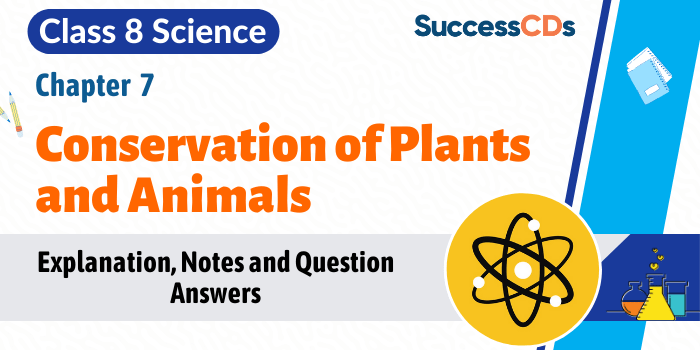
Conservation of Plants and Animals Class 8 Science Chapter 7 as per NCERT Book used in CBSE and other Schools. The lesson covers the complete explanation of class 8 Chapter 7 Conservation of Plants and Animals. Topics covered are the ecosystem, forest and its conservation, wildlife and its conservation, wildlife species and its types, red data book and migration. The lesson covers all important questions based on Conservation of Plants and Animals. NCERT solutions to book questions have also been provided for convenience of the students.
| Ecosystem | Conservation of forests | Sanctuaries | Red data book |
| biodiversity | wildlife | Flora and Fauna | Migration |
| Deforestation | Conservation of wildlife | Species | NCERT Book solutions |
CLASS 8
The topics we will cover in this chapter are as follows:
- Introduction of Ecosystem
- Forest and its Conservation
- Wildlife and its Conservation
- Wildlife species and its types
- Red data book
- Migration
Introduction
Every living organism on earth is a member of a dynamic community. That dynamic community is called the ecosystem.
Nature is a boon to us. The part of earth in which living and non – living organisms exist is called the biosphere. It contains a huge variety of species living in it that depends on each other. The interrelationship of the species and their relationship with the environment to support life is called biological diversity.
This community of organisms interacting with each other and their physical environment is called the ecosystem.
Conservation of plants and animals Class 8 Video Explanation
Ecosystem

Ecosystem is a complete unit that consists of living creatures and non living matters. This community of organisms interacting with each other and their physical environment including climate change is called the ecosystem.
Do you know? Earth is the only planet with life.
There are numerous kinds of plants and animals that exist on earth. Earth has all suitable conditions that are necessary for survival. Thus, we can say that on earth, diverse forms of life exist. Like a variety of plants (some have flowers and some give fruits) and animals (lion, deer, dog, snake) exist on earth.
Biodiversity

It is the term used for a number of different forms of plants and animals found on earth. Maximum diversity is found in forests. For example: In forests, there are a variety of plants and animals. We can say that it is a natural treasure.
Or
It refers to the variety of organisms existing on the earth. All of these organisms have their interrelationships and their relationship with the environment. It includes a variety of plants, animals and microorganisms.
Loss of biodiversity is a serious problem and the following are the reasons that cause loss of biodiversity.
The loss of biodiversity is mainly due to sudden, unplanned and disorganised change in environment. In the ecosystem, the interaction between living (biotic) and non-living (abiotic) is very important.
There are a number of threats to biodiversity to be seen due to human behavior and activities. For example: Human activities like deforestation.
Deforestation
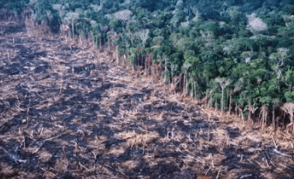
It is defined as removal or falling of trees for industrial setups, making building for rehabilitation, lodging, agricultural or grazing operation. The variety of plants and animals existing on earth are essential for the well being and survival of mankind. Today a major threat to survival of mankind is deforestation.
Causes of deforestation
- Rapid urban development.
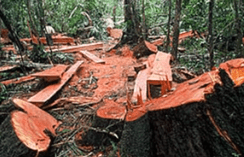
- Clearance of agricultural fields to grow more food. Nowadays, with the growing population, the need of human beings has also increased. To meet the daily needs, the balance in nature is getting imbalanced. Huge population requires more space to live in, more food to eat, more accessories and equipment to lead a comfortable life. Consequently, the nature is suffering.
- It may be used to fulfill fuel requirement for cooking, etc.
- Timber exploitation for construction purpose. Huge numbers of trees are being cut down to meet the need for increased land for housing, food, industries set up.
- Using land for setting up industries etc. Trees are cut to meet the need for wood used in manufacturing paper, furniture, in food industry, etc.
Consequences of Deforestation
The various consequences of deforestation are as follows:
- Reduced rainfall
- Imbalance of atmospheric gases
- Loss of Natural Habitat
- Change in Climate
- Decrease in Water level
- Reduced rainfall
The areas that are devoid of forests get reduced rainfall and may create drought like situation.
Deforestation leads to a decrease in the rainfall and hence lowers the level of ground water. This may lead to situation called droughts where people suffer from scarcity of water and hunger.
- Imbalance of atmospheric gases
Plants take in the carbon-dioxide during the process of photosynthesis and exhale oxygen. But less number of trees leads to an increase in the level of carbon-dioxide in the atmosphere.
Deforestation disturbs the balance between carbon dioxide and oxygen gas in atmosphere, which further results in increase in carbon dioxide leading to global warming. Once the carbon dioxide is increased, then, the carbon dioxide gas traps the heat rays reflected from earth’s surface and this will result in increase in temperature on earth and it will disturb the water cycle too and may reduce rainfall. This could cause drought.
- Loss of Natural Habitat
There are some species which live on trees and thereby cutting down of trees destroys home of those species.
- Change in climate

Deforestation changes the climatic condition. The increased temperature alters the water cycle and leads to reduction of rainfall. This results in occurrence of a situation called drought.
It also results in the alteration of properties of soil. Deforestation leads to soil erosion because roots of plants holds the soil firmly and hence prevents soil erosion. But lesser number of trees results in removal of top layer of soil which in turn exposes the lower portion of soil which is hard, rocky, contains less humus and is less fertile. In this way, a fertile land gets converted to a barren land. This is called desertification.
- Decrease in water level

Deforestation decreases the water holding capacity of soil which in turn reduces the movement of water to the lower ground from the upper part of the ground resulting in the increased chances of flood or we can say that it also decreases the infiltration rate of water into the ground.
As you know now forests play an Important role, therefore, they have to be conserved.
Conservation of forests
As forests are helping to maintain ecological equilibrium in the environment and thereby, there is an immediate need to conserve it. Also, we know that forests play an important role.
Different ways of Conserving Forests
- Reforestation
- Preventing Forests Fires
- Grazing in forests is to be controlled
- Reforestation
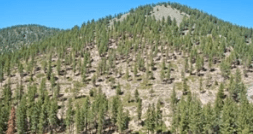
It means the process of restoring and recreating areas of forests. It includes growing more and more plants.
- Preventing forests fires
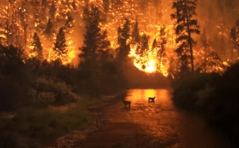
To make sure fires are not carelessly ignited, we should take special precautions. This might threaten people and kill wildlife and also destroys forests. Thus, we can say that prevention of forest fire is very necessary.
- Grazing in forests is to be controlled
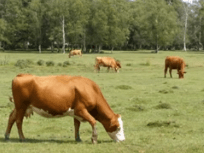
We should keep an eye on grazing in forests. As grazing control actually prevents soil erosion which is again essential as we know top layer is fertile as well as a habitat for various organisms. Plants grows on the top layer and it is also a habitat of many small organisms.
Wildlife
wildlife represents all non-domesticated animals living in their natural habitats. Like lion, elephants, etc. are found in forests.
Increase in population also leads to increase in demand for using land for various purpose including housing. Due to this, the habitats of many organisms are being destroyed and thus, we can say that our wildlife is in threat.
Causes of Depletion of wildlife
The following are the various causes of depletion of wildlife:
- Habitat loss
- Climate changes
- Pesticides and Toxic Chemicals
- Hunting and poaching
- Natural Phenomenon
- Pollution
- Habitat loss
Habitat is a place where living and non-living organism lives. Sometimes the cause of depletion of wildlife is the loss of their habitat that is the place where they live and develop. For example: Elephant lives in forest and if the forest is destroyed, the habitat of elephant gets destroyed. Also, the number of elephants decreases.
- Climate Change
Climate change (like sudden changes in the environment) can actually cause disastrous loss of wildlife. Thereby, habitat of different kinds of plants and animals gets destroyed. We need optimum temperature for survival. For example: A slight drop or rise in average rainfall will lead to seasonal changes that can harm hibernating mammals.
- Pesticides and toxic chemicals
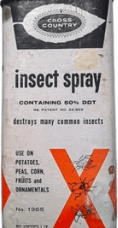
The use of pesticides or other chemicals can harm wildlife as they are toxic. For example: Petroleum by products, Antifreeze etc.
- Hunting and Poaching

Unregulated hunting and poaching can harm wildlife. Due to this the number of wildlife animals will decrease.
- Natural phenomenon
Natural phenomenon like Floods, Earthquakes, Volcanoes etc can also harm wildlife.
- Pollution

Pollution released in environment are ingested by variety of organisms. Pollution can be fatal. Hence, we can say that pollution is harmful for wildlife.
Conservation of Wildlife
To prevent deforestation and for conservation of forests and wildlife, the government has implemented many rules, methods and policies. Amongst many steps, areas called sanctuaries, national parks and biosphere reserves have been marked where activities like plantation, cultivation, grazing, hunting, poaching, etc. are prohibited.
It refers to preservation, protection or restoration of wildlife and their environment.
It includes the following activities:
- The inaction of wildlife act
- Species preservation and assemblage
- National parks sanctuary
- The inaction of wildlife act
It provides the protection of rare species like python, elephants, tigress of wildlife by prohibiting their hunting for various reasons. In this way, we can save them.
- Species preservation and assemblage
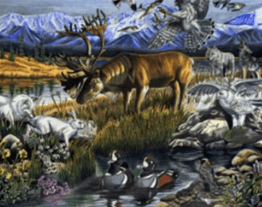
Species preservation and assemblage can be done by setting up national parks and sanctuaries.
National parks
It is an area reserved for welfare of wildlife and it strictly ban the activities like hunting, poaching, grazing etc. 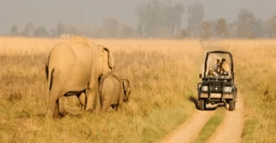
We can also say that it is large and diverse enough to protect whole set of ecosystem. National Parks preserve flora, fauna, landscape and historic objects of an area. For example. In the Satpura National Park, Rock shelters and Rock paintings are also preserved along with flora and fauna. Jim Corbett National Park is a national park which is located in Nainital where people can go and see the natural beauty, but they are not supposed to do hunting and poaching.
Sanctuaries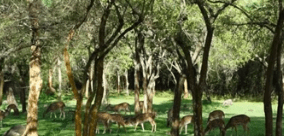
Sactuary is an area preserved for the conservation and protection of wildlife and operations like cutting timbre trees, collection of minor forest products etc. are allowed. In Sanctuaries, hunting and poaching is strictly prohibited.
A sanctuary may be a reserved natural area meant for the preservation and development of threatened/endangered species. For example, there is the Kaziranga Wildlife Sanctuary for Rhinoceros in Assam.
Flora and Fauna
The plants and animals found in a particular area are termed as flora and fauna of that area. Flora is a term which is used for plants and fauna is used for animals. 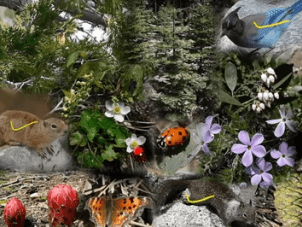
- They maintain a balance in the food chain of nature. Food chain is a sequence of transfer of energy from one organism to another. The food chain begins with autotrophs (producers) and ends with the consumption of the final energy by the heterotrophs (consumers).
- Plants that produce food by the process of photosynthesis are the autotrophs. The energy produced by the food produced by plants is taken up by the herbivores (animals that eat plants and plant products, eg. Deer, goat, etc.). The energy is then taken up by the carnivores (animals that eat other animals, eg. Tiger, lion, etc.) and omnivores (animal that eat both plants and animals, eg. Bear, human beings, etc.).
- In the absence of any one of these organisms the food chain will get disturbed and will affect rest of the organisms. Therefore it is important to take necessary initiatives to conserve the flora and fauna.
Species
They are a group of the population capable of interbreeding to produce fertile offsprings and have common characteristics. Normally, members of a same species breed amongst themselves and not with members of other species. For example, in forests there are a variety of animals like lion, deer, elephant. Lion is able to breed with only lion. Lion cannot breed with deer.
Wildlife species on the basis of being threatened or extinct are being classified into different categories:
- Endemic species
- Vulnerable species
- Endangered species
- Critically endangered species
- Endemic Species
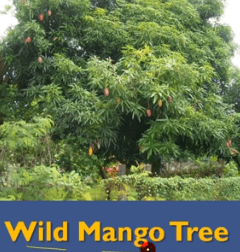
Endemic species are those species of plants and animals which are found exclusively in a particular area. They are not naturally found anywhere else.
A particular type of animal or plant may be endemic to a zone, a state or a country. For example: Giant squirrel, which is found only in South Asia. Wild Mango Tree, which is only found in Pachmarhi Biosphere Reserve.
- Vulnerable species
It includes those organisms that are likely to become endangered unless the circumstances that are not fit for its survival improve. They are not at present in endangered, but will be in endangered.
For example: Tiger is a vulnerable species. Venus fly trap plant is a insectivorous plant and feeds in insects. They have special modification through which it can trap insects.
- Endangered species
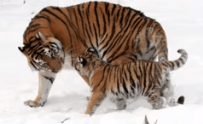
It includes all those organisms that are at a risk of becoming extinct. For example: Tiger.
These are at a risk of becoming extinct due to the following reasons-
- Changing environment
- Predation parameters
- They are already few in number
- Critically Endangered Species
It includes those organisms who are very few in number and their number is likely to decrease further. It indicates the organisms with highest risk category of endangered species.
Red data book
Red data book is the source book which keeps a record of all the endangered animals and plants. There are different Red Data Books for plants, animals and other species. Each species has a different red book data and it helps to remind the names of species which are in endangered.
It is maintained by the International union for the Conservation of Nature Resources (IUCN).
It contains the most updated information of the global conservation status of species.
Migration

Migration is defined as the movement of animals from one place to another.
For example: Red knot bird is a migratory bird which moves in order to have better living situations.
It occurs due to the following reasons:
- Sudden climatic change
- To find food or more livable conditions
- For breeding purpose etc.
NCERT Book solutions
Time to check your knowledge by answering the following questions-
Multiple Choice Questions
1. A place in environment where an organism lives is ________
a. Home
b. Resort
c. Habitat
d. Reservoir
2. Cutting of trees on large scale is called as______
a. Deforestation
b. Reforestation
c. Afforestation
d. None of these
3. Deforestation takes place by____
a. Human activities
b. Only by natural resources
c. Both of these
d. None of these
4. The species which are at the verge of the extinction are called as______
a. Endemic
b. Extinct
c. Endangered
d. None of these
5. The growing more and more plants is called as _____
a. Deforestation
b. Afforestation
c. Reforestation
d. None of these
6. Fauna indicates for
a. Plants
b. Animals
c. Both plants and animals
d. None of these
7. The places where animals receive protection is called as____
a. Zoo
b. National parks
c. Rock shelters
d. None of these
8. Project Tiger was launched on______
a. 1 April 1973
b. 23 May 1973
c. 21 September 1973
d. 25 December 1973
9. Sanctuary is a place where_____
a. Animals are protected
b. Plants are protected
c. Office of forest department
d. None of these
10. Part of earth which supports the biodiversity is called as _____
a. Biosphere
b. Sanctuary
c. Ecosystem reserve
d. Biotic community
ANSWERS
- c
- a
- c
- c
- b
- b
- a
- a
- a
- a
Question: What is project Tiger?
Answer: It is a project launched by government to protect tigers in the country. The objective of this project was to ensure the survival of tigers and maintenance of tiger population in country.
Question: What is recycling of paper?
Answer: It is defined as reuse of used paper in order to conserve natural resources as it can be a preventive measure against deforestation. For example: We get paper from forests. If we will reuse paper, then we need not to cut more trees. In this way, we can conserve our natural resources. Therefore, we should use paper economically.
Question: How does recycling and saving of paper relate to deforestation?
Answer: Trees are used in making paper. We get trees from forest. With the increase in demand for paper, we need to cut more trees. In this way it causes deforestation. Therefore, we should reuse and recycle paper. By doing so we can save trees.
Question: Write names of threatened animals
Answer: The threatened animals are Blue whale, African Elephant, Bengal Tiger and Black Rhino.
Question: Define species
Answer: They are a group of individuals capable of interbreeding among themselves.
Question: Define Desertification
Answer: Desertification changes the physical properties of soil. It causes soil erosion that is removal of top layer which exposes the lower, hard and rocky layers. This soil is less fertile and has low quantity of humus.
Choose the correct option
Question 1: Which of the following animal is endemic to Pachmarhi Biosphere Reserve?
a. Flying squirrel
b. Bengal tiger
c. Elephant
d. Gharial
Answer: (a) flying squirrel
Question 2: Which of the following plants is endemic to Pachmarhi Biosphere Reserve?
a. Jackfruit
b. Wild Guava
c. Wild mango
d. Mahua
Answer: (c) Wild mango
Question 3: Kanha National Park is in which state?
a. Madhya Pradesh
b. Assam
c. West Bengal
d. Uttarakhand
Answer: (a) Madhya Pradesh
Question 4: Gir National Forest is in which state?
a. Madhya Pradesh
b. Gujarat
c. Kerala
d. Rajasthan
Answer: (b) Gujarat
Question 5: Project Tiger was launched in which year?
a. 1963
b. 1973
c. 1983
d. 1993
Answer: (b) 1973
Question 6: Indian Forest (conservation) Act came into effect in which year?
a. 1947
b. 1937
c. 1927
d. 1917
Answer: (c) 1927
Question 7: What is the total number of national parks in Pachmarhi Biosphere Reserve?
a. One
b. Two
c. Three
d. Four
Answer: (a) One
Question 8: What is the total number of wildlife sanctuaries in Pachmarhi Biosphere Reserve?
a. One
b. Two
c. Three
d. Four
Answer: (b) Two
Question 9: The Red Data Book was originally prepared by which of the following?
a. IUCN
b. WWF
c. UNICEF
d. UNO
Answer: (a) IUCN
Question: Wild life is continuously decreasing. What is the main reason of this?
a. predation
b. cutting down of forest
c. destruction of habitat
d. hunting.
Answer: (c) destruction of habitat
Explanation:
Wild life refers to all living organisms (terrestrial, aquatic and aerial) living in all possible natural habitats of their own, other than the cultivated plants and domesticated animals. Thus “wildlife” does not exist only in forest and are hunted down, but wildlife includes even the migrating birds, turtles, coral reefs, microorganisms, insects, fishes, etc. Several hundred organisms are endangered or on the verge of extinction.
The reasons are deforestation, pollution, killing, over exploitation etc. The most important among them is deforestation or destruction of their natural habitat because it will affect the species (flora and fauna) of complete area and not only the few organisms. The natural habitat may be destroyed by man for his settlements, grazing grounds, agriculture, mining, industries, dam building etc. As a consequence of this, the species must adapt to the changes, move elsewhere or may succumb to predation, starvation or disease, and eventually dies.
Question: Which group of vertebrates comprises the highest number of endangered species?
(a) mammals
(b) fishes
(c) reptiles
(d) birds
Answer: (a) mammals
Explanation:
A taxon is endangered when its populations have decreased or habitats have been reduced to the levels that pose immediate danger of extinction. They are not likely to survive if the factors threatening their extinction continue. IUCN Red List (2004) documents the extinction of 784 species (including 338 vertebrate species, 359 invertebrate species and 87 plant species) in the last 500 years.
On worldwide basis, more than 15,500 species are facing the threat of extinction. At present, 12% of the bird species, 23% of mammal species, 23% of mammal species, 32% of amphibian species and 31% of gymnosperm species are facing the threat of extinction in the world.
Several endangered mammalian species are Panthera pandus (Leopard), Panthera leo persica (Lion), Presbytis pilaelus (capped langur) etc.
Here are some one word questions:
- A place where animals are protected in their natural habitat is called a _____________ .
Answer: Sanctuary. - Species found only in a particular area are known as ______.
Answer: Endemic species
- Migratory birds fly to far away places because of ____ changes.
Answer: Weather /climatic
- ___________ National Park is the first Reserve Forest of India where the finest Indian teak is found.
Answer: Satpura National - A group of populations which are capable of interbreeding is called _______________
Answer: Species
Differentiate between the following
(i) Wildlife sanctuary and biosphere reserve
Answer:
Biosphere Reserve : Large areas of protected land for conservation of wildlife, plant and animal resources and traditional life of the tribals living in the area.
Wildlife sanctuary: Areas where animals are protected from any disturbance to them and their habitat.
(ii) Zoo and wildlife sanctuary
Answer: The zoo keeps animals in captivity, within artificially created habitat, whereas the sanctuary provides home to animals in their natural habitat without captivity.
(iii) Endangered and extinct species
Answer: Animals whose numbers are diminishing to a level that they might face extinction are known as the endangered animal. For example: Tiger where as a species that has completely disappeared from the planet like the pink-headed duck and the cheetah are called extinct species.
(iv) Flora and fauna
Answer: All the different kinds of plants on earth constitute its flora and all its different kinds of animals are collectively called its fauna.
2 marks Questions
1. How does deforestation reduce rainfall on land?
Answer: Since plants help in evaporation of water, deforestation reduce rainfall on land.
2. How does deforestation lead to floods on the land?
Answer: Deforestation also leads to a decrease in the water holding capacity of the soil. The movement of water from the soil surface into the ground (infiltration rate) is reduced. So, they might cause floods.
3. What is the purpose of making national parks, wildlife sanctuaries and biosphere reserves?
Answer: The purpose of making national parks, wildlife sanctuaries and biosphere reserves is to conserve and protect the whole ecosystem from exploitation and to protect the ecosystem.
3 mark Questions.
1. Why should we conserve biodiversity?
Answer: This is because Biodiversity maintains the environment around us. Plants and animals together maintain several natural cycles such as the oxygen, nitrogen and carbon cycles. These gases in turn play a crucial role in maintaining life on earth.
2. Protected forests are also not completely safe for wild animals. Why?
Answer: It is a pity that even protected forests are not safe because people living in the neighborhood encroach upon them and destroy them.
3. Some tribals depend on the jungle. How?
Answer: Some tribals depend on the jungle as they live in the deep forest like primitive people had lived in ancient times. They are still away from the basic amenities of modern life. Forests provide them food like seed grains, fruit, raw vegetables and other products like honey, meat of hunted wild animals for themselves, fodder for their animals, wood fuel for heating and cooking, even clothing using natural fibers, leaves and animal skins.